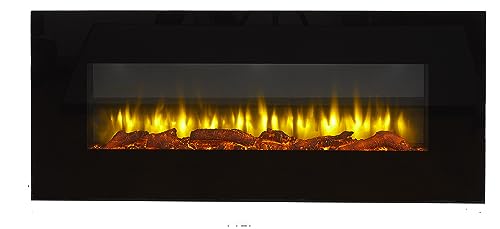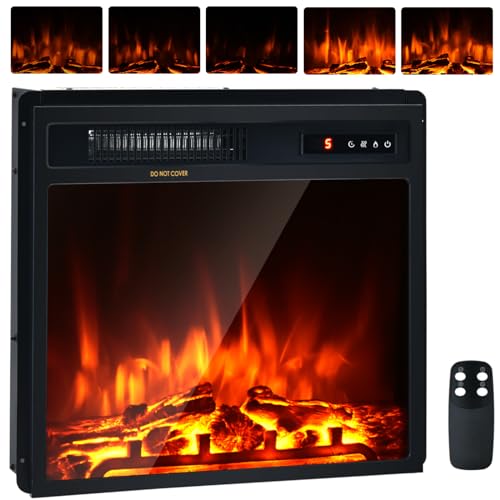7 Helpful Tips To Make The Most Out Of Your Small Wood Burner
페이지 정보

본문
 Caboose - A Very Small Wood Burner
Caboose - A Very Small Wood BurnerThe Caboose is an Ecodesign and DEFRA approved log burner which can burn both smokeless and wood. It can burn larger pieces of wood than small stoves, and also has a high heat output and burn time.
The wood stove can be shielded by a heatshield to comply with Approved Building Document J, which states that wood stoves must be kept away from combustible surfaces.
Clean Wood
Wood stoves look beautiful, but they are also a great way to heat your home. To ensure that they work efficiently and smoothly they must be maintained in a proper manner. It can be a bit of an issue to keep the glass in good condition. But a few simple steps can make a significant difference.
First foremost, it is essential to only use the wood that has been seasoned in your wood stove. This means that it should be cut and stored for at least one year prior to being used, as this will help reduce the amount of smoke. Wood that is not properly seasoned can cause the flue to overheat and lead to a fire that is out of control.
Only burn clean modern wood burner on your stove. Avoid using paper or other non-wood substances such as rubber and plastics because they can release toxic fumes that aren't healthy for your health. Burning treated or painted wood could release harmful chemicals such as arsenic, which can be harmful for your health.
You should also clean your stove's interior regularly. This can be accomplished easily using a regular household vacuum cleaner and brush attachment. You can also buy various cleaners designed to be used on stove glass. However it is crucial to ensure that the product you use does not invalidate the warranty of your stove before using it.
It is also important to check regularly the fire rope seals around the doors at the top and bottom of your wood burner. These seals prevent smoke or soot from leaving the stove and are crucial to ensure that they are securely in position and not damaged.
The last thing to do is you must remove any birds that have settled on your chimney. Seagulls can be a problem since they tend to be a nuisance to chimneys during summer. This can cause all kinds of debris to be deposited in the flue and cause damage to your stove. There are a number of different spikes and bird guards available for sale that can be affixed to your chimney to stop this from happening.
Paper Burning
Burning paper is a quick way to get an fire going, however the wrong type of paper can create dangerous smoke. Certain types of papers such as gift wrap and glossy magazines contain harmful chemicals that could release toxic fumes as they burn. Only burn clean paper in your wood stove to avoid creating a dangerous atmosphere.
If you have only a few pieces of paper to burn, consider using a tub. Set a pile of papers over a tub, and then light one corner. The water will capture any embers that fall and prevent them from catching the grass or tree on fire. If you are concerned about the smell of burning paper, put a bowl full of baking soda or vinegar nearby to neutralize the odors.
Start with a base of small twigs, or newspaper that has been shredded. This will ensure that the paper burns correctly. Then, add 3-4 medium-sized wood logs to the fire and allow them to start to burn. Then, place the paper on top of the burning tinder. The paper will burn fast and you must watch the fire closely.
It is best to burn your papers outside on a day when there isn't any wind. A strong wind gust could blow embers onto your property or into the grass. Furthermore, the smoke of burning papers could cause breathing issues when inhaled.
You can also use paper to burn on an BBQ grill but it is better to do this if you have only a handful of sheets to burn. If you have a removable grilling surface, you can take it off it and then burn the paper directly on the charcoal.
Before you begin to burn paper, ensure that your wood burner is fully operational and that the fire pit has been cleared of branches, twigs, and other flammable materials. In the event of an emergency, it's an excellent idea to keep a fire extinguisher in the vicinity. Consult with your local authorities and homeowners association to determine if it is legal for you to burn paper outside.
Safety Precautions
Wood-burning stoves are fantastic sources of comfort and enjoyment however, only if you utilize them with care. While it may be obvious to some, the fact is that all too many people don't take the time to adhere to simple safety guidelines.
Make sure that your stove is properly insulated and any flue pipes that run outside are well-protected. You should also make sure that pets and children are kept away from the stove.
Make sure that any paper or trash is not left in the firebox. The woodburning fireplace and chimney can overheat if these items are ignited. They can also create creosote, which is a major fire hazard and must be cleaned on a regular basis.
Make sure that the smoke alarms are in good in good condition and test them regularly. Installing carbon monoxide alarms can also save lives. They are also cost-effective.
Always keep a fire extinguisher within reach in the event of an emergency. Always burn only dry, seasoned, and dry logs and never build a stack of logs that are too big. Burning a pile of logs together results in incomplete combustion, which can lead to increased CO emissions. It is crucial to keep an eye on and control the fire. If it gets out of hand it must be put out immediately.
After you've used your stove, ensure that the fire is out and that all combustible materials have been removed from the area around the fireboxes and flue pipes. The clearance requirements will vary according to the model of your stove and the method by which you plan to place the stove in your home.
If you're planning to install your wood stove in a smoke-free zone, look for a DEFRA approved model. These stoves have been specifically designed to operate in smoke-controlled areas. They come in various sizes and colors. Some models can be customised to your specific design and come with direct air intake for improved performance in areas with smoke control.
Installation
Wood stoves can be used to warm small spaces. They can be found in sheds, yurts, and even cabins. They also provide a warm and cozy fire that does not require oil or electricity. It is crucial to follow the installation instructions supplied by the manufacturer to set up your wood stove properly. These instructions can help you avoid risky issues, and ensure that your stove is safe to use.
Before installing your stove you must remove all combustible items from the area. Also, ensure that you have at least 16" of clearance from the stove to the closest wall that is combustible. If you do not meet these requirements, a stoveboard or hearth pad could be put in place. The non-combustible pad comes with 1" spacers to allow the stove sit a little further away from the wall, which could reduce the clearance requirement by as much as 66%.
To prevent smoke from escaping back into the room, you should take out combustible things like curtains and furniture. Also, you should install a smoke alarm and carbon monoxide detector in your shed wood burner. Additionally, you should ensure there is sufficient ventilation in your shed. It is essential to regularly inspect your stove to ensure safety.
It is a good idea to purchase an electric stove that has EPA certification. This means that the stove is more than 75 percent efficient. This means it can capture and convert a greater amount of heat generated by the wood. You should also choose your wood stove according to the recommended heating capacity of the room in which it will be installed. This will help you avoid overheating your wood stove, which could cause creosote and smokeouts.
After you have cleared the area and removed objects that could ignite, you must prepare the stove's foundation. This will involve removing all combustible items and making the hearth ready. Also, you should check for any existing vents to make sure they are not blocked and clear. You'll need to put in vents if they are not working.
 Once your stove is installed and you are ready to test it by lighting 3 or 4 small fires. This will cure the paint and fire bricks on your stove, and will ensure that you are able to safely ignite large flames.
Once your stove is installed and you are ready to test it by lighting 3 or 4 small fires. This will cure the paint and fire bricks on your stove, and will ensure that you are able to safely ignite large flames.- 이전글Assured No Stress Gold Mining Stocks 25.01.06
- 다음글How To Make An Amazing Instagram Video About Coffeee Machine 25.01.06
댓글목록
등록된 댓글이 없습니다.